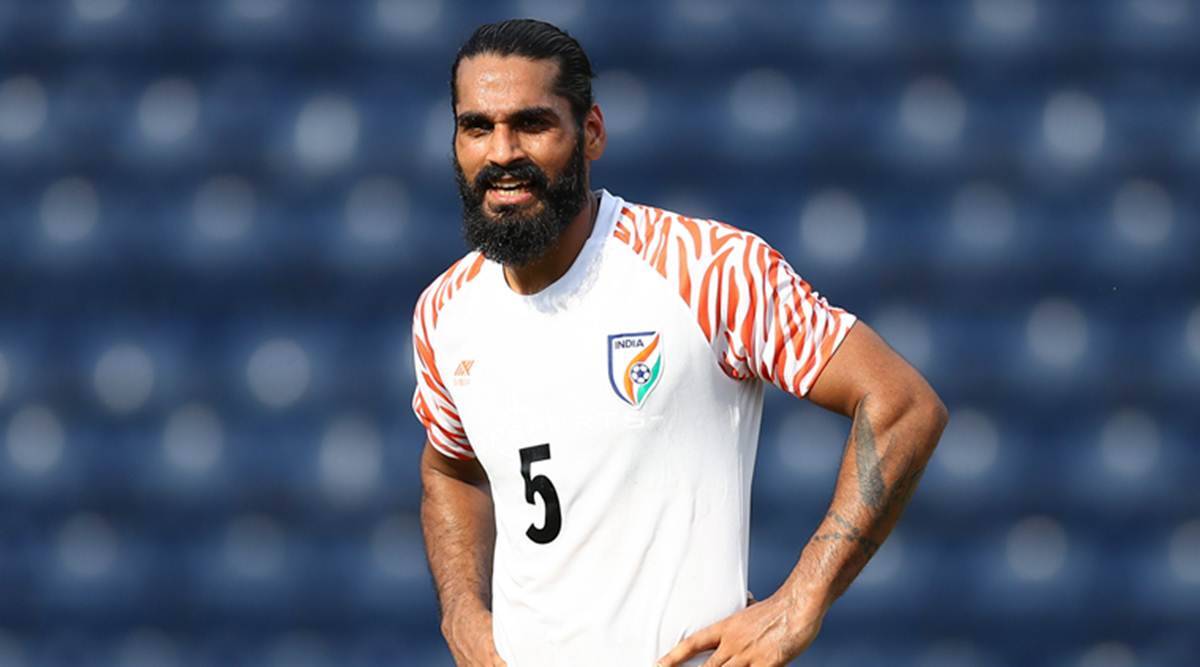 Sandesh Jhingan completed his move to Croatia's top-tier league in August last year. (File Photo)
Sandesh Jhingan completed his move to Croatia's top-tier league in August last year. (File Photo) There was a trace of regret and a whole lot of sadness in Sandesh Jhingan’s statement, announcing his return to former Indian Super League (ISL) champions ATK Mohun Bagan.
Arguably the best centre-back in the country at the moment, Jhingan was left wondering where it all went wrong five months after experiencing the highest of highs – securing a contract to play professionally in Europe. Last August, the 28-year-old became the first Indian to sign for a top-tier club in Croatia, HNK Sibenik. At his age, it was always a risky move but if there’s one quality we know of Jhingan, it’s that he does not lack courage.
— Sandesh Jhingan (@SandeshJhingan) January 6, 2022
Unfortunately for him, a spate of injuries and a managerial change at the club meant Jhingan left Sibenik and returned to India last week, without playing a match or being able to prove his worth in training. Ultimately, on January 6, he rejoined his former team ATK Mohun Bagan, with whom he had signed a big-money five-year contract in September 2020.
In his statement, Jhingan referred to some ‘off-the-field setbacks’, without elaborating much. “I am very happy to have joined ATK Mohun Bagan FC… who have supported me no matter what, especially in the past few months when me and my family both struggled a lot because of my injury and off- the-field setbacks,” he wrote. “This reminds you, that no matter how hard you work, no matter how big your plans are, you are never sure whether it will go your way or not.”
Sandesh Jhingan is back, the story continues 💚♥️#ATKMohunBagan #JoyMohunBagan #AmraSobujMaroon pic.twitter.com/X94RlOl5nW
— ATK Mohun Bagan FC (@atkmohunbaganfc) January 6, 2022
For ATK Mohun Bagan – and also for the Indian national team – Jhingan’s return is good news. For the former, it’s a chance to add heft to their up-and-down season and for the latter, Jhingan getting consistent match time, rather than sitting on the bench, before crucial Asian Cup qualifiers is a positive development.
While any effort made by a player to step out of his comfort zone should be encouraged, Jhingan’s case – which is yet another incident of misadventure for an Indian player abroad – makes it important for Indian football to face some hard facts.
In his well-researched essay in 2015, UEFA ‘A’ licence coach Richard Hood, who manages Bengaluru United, noted that for an Indian player, ‘being good enough is just not good enough when being considered for a contract overseas – you have to scream quality with every touch and decision.’
Goalkeeper Gurpreet Singh Sandhu is the only Indian player in recent years who had some match time during his stint in Europe. That was possible because of his willingness to sacrifice and grit it out, and the ability of his agents to identify a club – in Norway – with the correct atmosphere for him to get opportunities to play and get exposure in training to improve.
Not good enough
Sandhu, though, remains an exception. The truth is that most Indian players do not ‘scream quality’. It’s the reason why they do not find a place even in the starting 11 of their own domestic league, the ISL. It’s glaring especially for central defenders, with almost every team opting for at least one foreign player in that position.
It’s convenient to blame the players and say they lack quality. But the players merely are a reflection of the system that produces them. And the Indian football ecosystem, at the risk of sounding like a broken record, is still not doing enough to develop players at a youth level between the ages of 8 to 18.
There is an effort to address that with baby leagues and youth leagues, but the number of matches and the quality of coaching remains much inferior compared to mature football countries. Proper youth development and guaranteeing enough competition are the only factors that determine whether or not a player will be able to make it to the big leagues.
Hood cited the example of three Indian players, who went for a trial with the Sheffield United academy in 2012. “…it exposed limitations in the quality of technical execution and tactical aptitude over the 90 minutes we competed as a team. They were of course comfortable but nowhere close to being counted as exceptional,” Hood had noted.
Indian players first need to find a place in the first 11s of their ISL teams and draw the attention of superior leagues in Asia before they can dream of playing in Europe. At the moment, an Indian heading abroad for trials is more often than not just an elaborate PR exercise in which no one but the agent seems to benefit.
A report in Newsclick recounted the legendary Chuni Goswami’s ‘smartness’. In 1962, Goswami was offered a chance to appear for trials at Tottenham Hotspur. But one of India’s greatest players rejected it, the report said, after he ‘perhaps realised he wasn’t up to it.’
It’s a lesson in self-awareness that players from this generation can do with.
- The Indian Express website has been rated GREEN for its credibility and trustworthiness by Newsguard, a global service that rates news sources for their journalistic standards.

